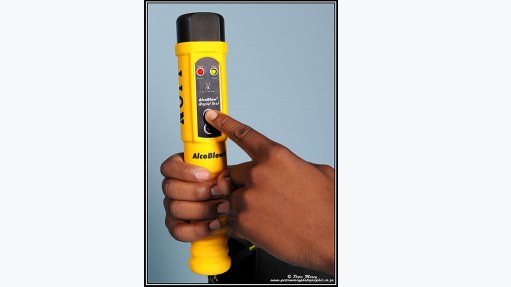Get CBAM ready
Pass on gas, not the other way around” is an environmental slogan which came to my mind as I sat down to pen this piece. Speaking of the environment, did you know that there is a section dedicated to it in the Schedules of the Customs and Excise Act, 1964?
It is in Part 3 of Schedule No 3 and is aptly titled ‘Environmental Levy’. Although seemingly singular, do you know how many ‘environmental levies’, there are?
The answer is six, and they are in Parts 3A to 3F.
Are you able to name them? Do not beat yourself up if you cannot. There is a reason a ‘levy’ is called an ‘indirect tax’. By definition, an indirect tax is imposed on a good before it reaches the customer, who ultimately pays the levy as part of its market price.
So, on which goods are you inadvertently paying an environmental levy? The answer is: on the following – plastic bags; electricity generated in South Africa; electric filament lamps; the carbon dioxide emissions of motor vehicles; tyres; and carbon emissions.
Are you intrigued as to why it’s called a ‘levy’, and not a ‘duty’ or a ‘tax’? A lesser-known fact is that the revenue collected by the South African Revenue Service (Sars) through the imposition of a levy is retained by South Africa, and not distributed among the Southern African Customs Union member countries of Botswana, eSwatini, Lesotho and Namibia. Could this be the reason why the ‘Environmental Levy’ is such a growing category? Or could it be that it is seemingly a morally justifiable levy?
Who would argue against the imposition of a levy that essentially penalises us for contributing to the destruction of Mother Earth? The obvious question that should be asked is whether the proceeds of the levy are ringfenced and used to remedy the destruction caused, or whether the levy is simply a fiscal measure? The two-word reason for its imposition is ‘market failure’. In other words, the price of the good that you buy does not include the cost of the damage that you are inflicting on the environment.
But I digress. Returning to the Environmental Levy; with what regularity are these levies amended? In a word, annually. The amendments tend to be announced by the Finance Minister in his Budget Speech, which is yet another reason you should read the Budget Review. If you have not done so, visit www.treasury.gov.za, and go to February 21. As a teaser, concerning the levy amendments that Sars introduced on April 1 – it’s no April Fools announcement – we were forewarned about these in the Budget Speech. As the adage goes, forewarned is forearmed.
Speaking of forearmed, what do you know the about the CBAM? Have you even heard of it? Will it impact on your goods? If the acronym is unknown to you, it stands for Carbon Border Adjustment Mechanism. In essence, it’s a “tool to put a fair price on the carbon emitted during the production of carbon-intensive goods that are entering a country, and to encourage cleaner industrial production in third countries”. So, whose ‘tool’ is it? It’s of the European Union (EU).
In its ‘marketing literature’, the EU states: “By confirming that a price has been paid for the embedded carbon emissions generated in the production of certain goods imported into the EU, the CBAM will ensure the carbon price of imports is equivalent to the carbon price of domestic production, and that the EU’s climate objectives are not undermined. The CBAM is designed to be compatible with World Trade Organisation rules.”
In case you missed it, on October 1, 2023, the CBAM entered into application in its transitional phase, with the first reporting period for importers ending on January 31. The gradual phasing in of the CBAM allows for a careful, predictable and proportionate transition for EU and non-EU businesses, as well as for public authorities.
You might well be asking yourself: What about ex-EU member country the UK? On March 21, the UK government extended an invitation for comment on its proposed ‘Introduction of a UK carbon border adjustment mechanism from January 2027’, for which the deadline is June 13.
Comments
Press Office
Announcements
What's On
Subscribe to improve your user experience...
Option 1 (equivalent of R125 a month):
Receive a weekly copy of Creamer Media's Engineering News & Mining Weekly magazine
(print copy for those in South Africa and e-magazine for those outside of South Africa)
Receive daily email newsletters
Access to full search results
Access archive of magazine back copies
Access to Projects in Progress
Access to ONE Research Report of your choice in PDF format
Option 2 (equivalent of R375 a month):
All benefits from Option 1
PLUS
Access to Creamer Media's Research Channel Africa for ALL Research Reports, in PDF format, on various industrial and mining sectors
including Electricity; Water; Energy Transition; Hydrogen; Roads, Rail and Ports; Coal; Gold; Platinum; Battery Metals; etc.
Already a subscriber?
Forgotten your password?
Receive weekly copy of Creamer Media's Engineering News & Mining Weekly magazine (print copy for those in South Africa and e-magazine for those outside of South Africa)
➕
Recieve daily email newsletters
➕
Access to full search results
➕
Access archive of magazine back copies
➕
Access to Projects in Progress
➕
Access to ONE Research Report of your choice in PDF format
RESEARCH CHANNEL AFRICA
R4500 (equivalent of R375 a month)
SUBSCRIBEAll benefits from Option 1
➕
Access to Creamer Media's Research Channel Africa for ALL Research Reports on various industrial and mining sectors, in PDF format, including on:
Electricity
➕
Water
➕
Energy Transition
➕
Hydrogen
➕
Roads, Rail and Ports
➕
Coal
➕
Gold
➕
Platinum
➕
Battery Metals
➕
etc.
Receive all benefits from Option 1 or Option 2 delivered to numerous people at your company
➕
Multiple User names and Passwords for simultaneous log-ins
➕
Intranet integration access to all in your organisation


















